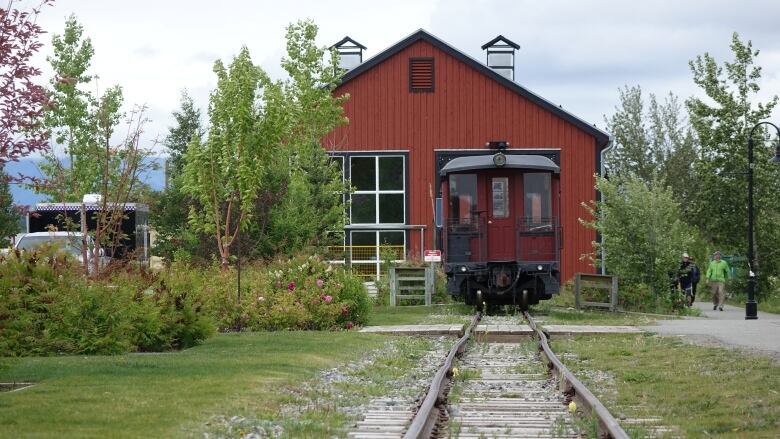OPINION | Good riddance to the Whitehorse waterfront trolley
The tourist attraction is a money pit with dubious historical value, Lori Fox writes

Thirty dollars.
That's how much money the Yukon government spentto subsidize each rider on the MacBride Waterfront Trolley in Whitehorse.
The recent territorial government decision to cease funding that tourist attraction has left some Yukoners including the Opposition fuming.But it makes perfect financial sense to stop tossing taxpayer dollars into a diesel-powered money pit of questionable heritage value.
The trolley which was originally part of the Copperbelt Mining Museum, which the MacBride Museum absorbed in 2017 first ran in Whitehorse in 2000. Documents provided by Yukon cabinet spokesperson Lisa Bucher show the territory has dropped $5.5 million on the trolley since then, including $305,000 to purchase the trolley,$691,000 to fix up the tracks on which to run it,$420,000 for a passenger train, and $610,000 on the building where the train is housed.
Over the last 10 years, the average government contribution per year has been about $218,000, including $107,000 a year in core funding for the little-trolley-that-could (get you from one end of the waterfront to the other very slowly, and even then, only some of the time).

Moreover, it's not as if all the money already spent on the trolley has put it in a place where its needs can be maintained by its core funding; both the trolley and the track it runs on are old and need specialized care, upkeep and repairs.
The trolley's claim to Yukon heritage is a stretch.
The trolley is supposed to take riders from Rotary Peace Park to Spook Creek where you can enjoy a breathtaking view of the Walmart parking lot across the street but since the trolley closed down for repairs in 2017, it's just been shuffling back and forth from its headquarters at the Roundhouse to the edge of Rotary Park. That'sa stretch of ground that a healthy adult could cover, walking, in about 15 minutes.
MacBride Museum asked for $514,000 $196,000 in 2019 and another $159,000 in 2020 and 2021 to repair 350 metres of track and to run the train for three years, says Sunny Patch, communications director for the cabinet office.
The estimated cost to fix the track all the way to Spook Creek is $1 million.
What heritage value?
Yukoners are attached to things we deem to have "history." The trolley's claim to Yukon heritage, however, is a stretch; it's a restored streetcar originally used in Lisbon, Portugal, in 1925 and later sold to a railway museum in Duluth, Minn., which owned the vehicle until it was purchased by Yukon in 1999.
The attraction's only tangible link to Yukon history is the track, which was part of the White Pass and Yukon Route. The trolley itself is just a prop, akin to buying and maintaining a 1945 Ford pick-up just to drive it up and down a length of the Canol Road.

Even if you ignore the trolley's dubious historical value and allow for it to be a fun-if-quirky tourist attraction, $5.5 million is a wild amount of money for the government to spend on what's basically a slow golf cart ride.
This is not to say cultural projects like museums and the arts are without value; they have a social and cultural benefit that goes beyond their price tag. However, the $107,000 in core funding could be spent elsewhere; it would also cover two-thirds of the $154,000 in city taxes cash-strapped MacBride Museum has said it's unable to pay on its fancy new expansion.
Some people have expressed disappointment and surprise at the government's decision to terminate funding for the trolley now, when so much money has already been poured into repairing the attraction. But anyone who has ever bought a used car and found it to be a lemon knows there is a point where you just have to cut your losses.
While the trolley might be fun and cute and educational, that's what it ultimately is: a taxpayer-funded lemon.
This column is part of CBC'sOpinion section.For more information about this section, please read thiseditor's blogandourFAQ.












_(720p).jpg)


 OFFICIAL HD MUSIC VIDEO.jpg)
.jpg)



























































































